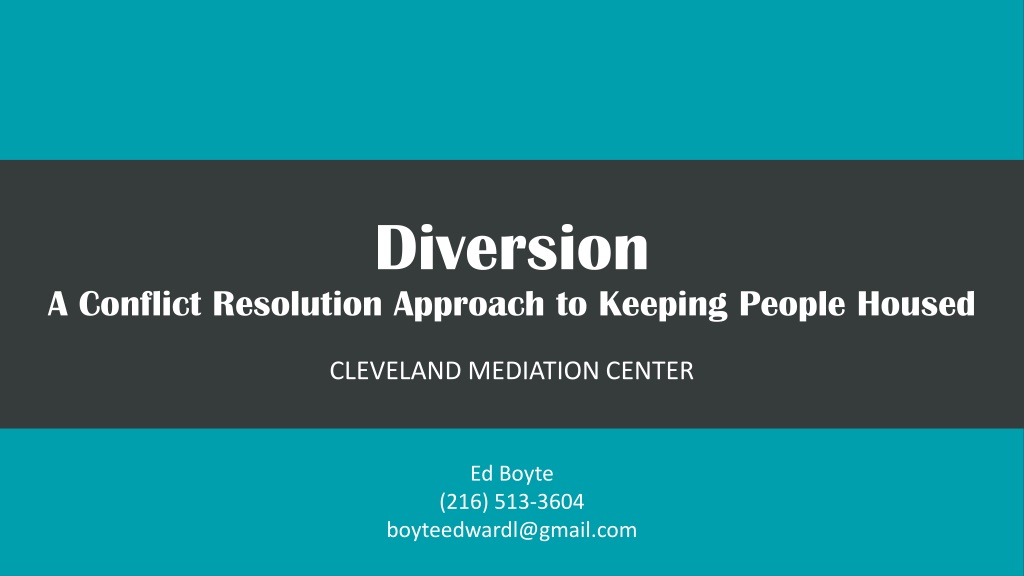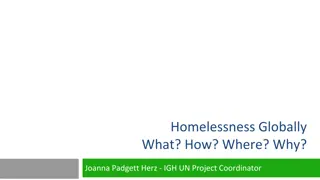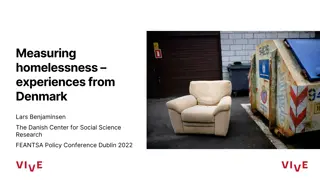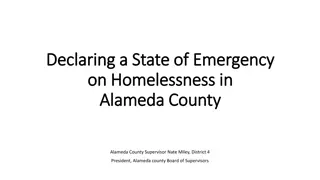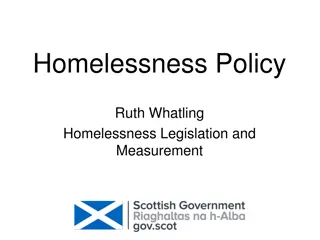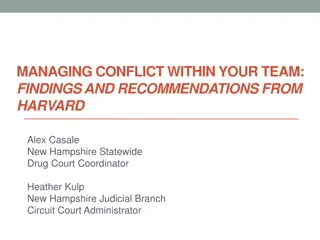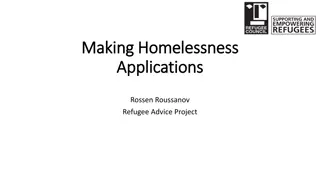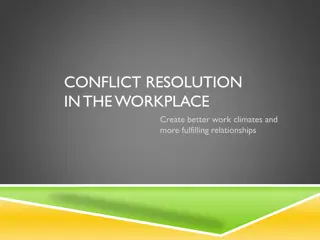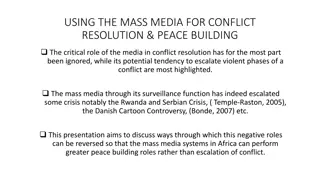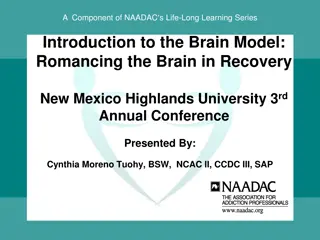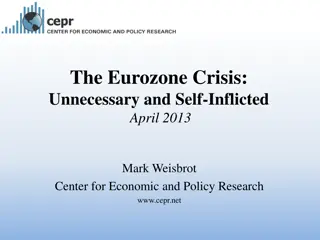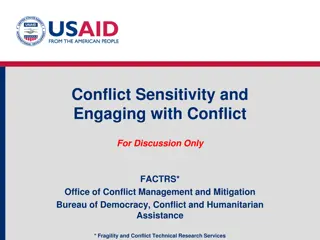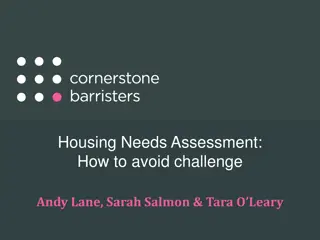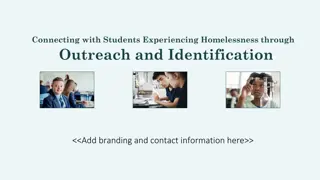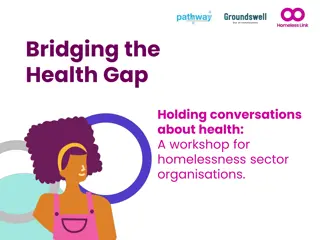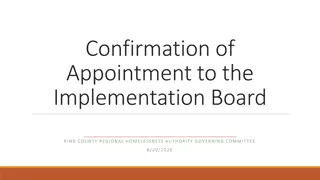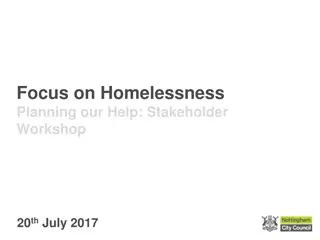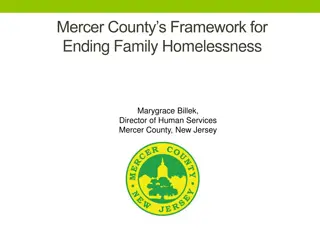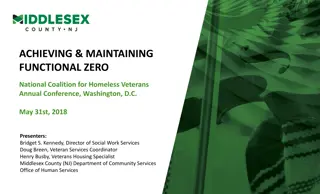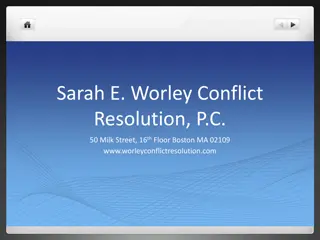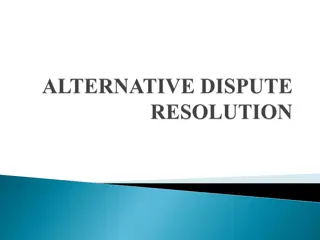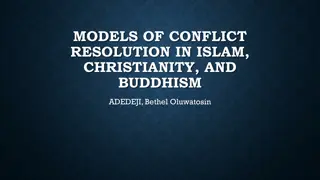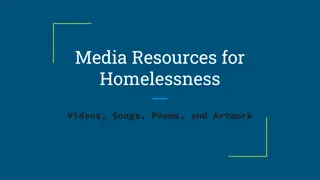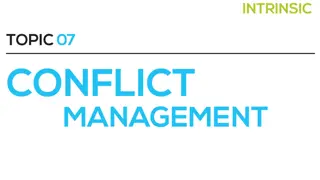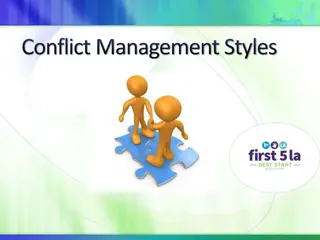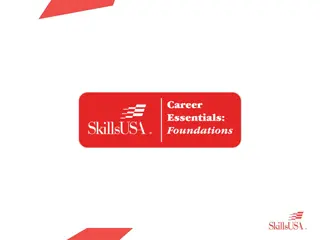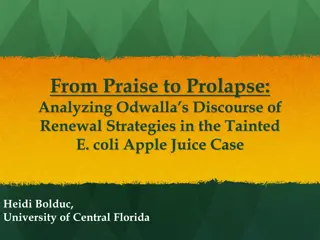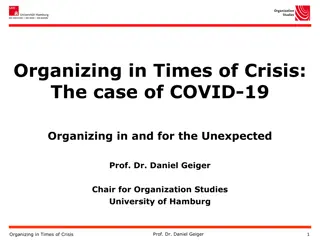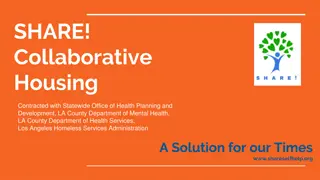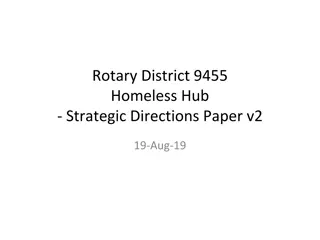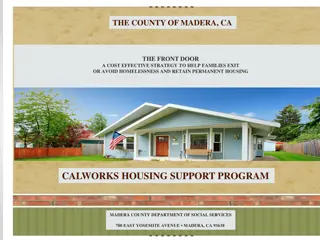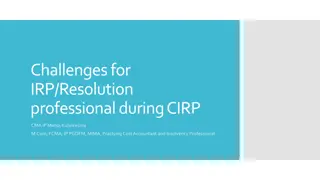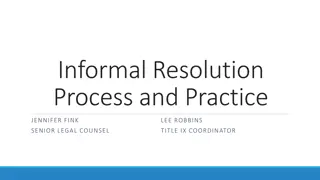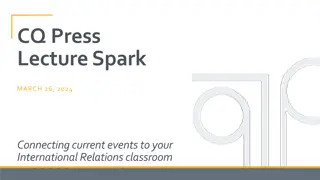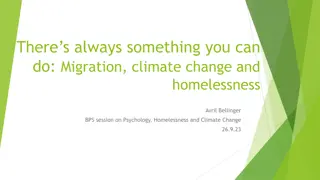Innovative Approach to Conflict Resolution in Homelessness Crisis
Cleveland Mediation Center (CMC) employs a Diversion Conflict Resolution Approach to address homelessness crisis as effectively as conflicts. By applying the Empowerment Theory of Conflict, they empower individuals in crisis to regain control over their situations and lives. Through a strength-based approach, clients identify and utilize their strengths to navigate episodes of homelessness. Diversion activities focus on preventing individuals from entering shelters and finding safe housing alternatives. The outcomes of this approach include returning people to their residences, relocating them to safe places, or temporarily diverting them as they search for new housing.
- Conflict Resolution
- Homelessness Crisis
- Diversion Approach
- Empowerment Theory
- Strength-based Approach
Download Presentation

Please find below an Image/Link to download the presentation.
The content on the website is provided AS IS for your information and personal use only. It may not be sold, licensed, or shared on other websites without obtaining consent from the author. Download presentation by click this link. If you encounter any issues during the download, it is possible that the publisher has removed the file from their server.
E N D
Presentation Transcript
Diversion A Conflict Resolution Approach to Keeping People Housed CLEVELAND MEDIATION CENTER Ed Boyte (216) 513-3604 boyteedwardl@gmail.com
Applying the Empowerment Theory of Conflict to Crisis In 2009, CMC presented to the Ohio state- wide Domestic Violence Conference on work they did with the Domestic Violence Center s staff and residents of its shelter. Can we apply similar strategies to people in crisis that we do to people in conflict? Mediators listened to staff and heard from residents in an effort to ease tensions. CMC discovered something the specific traits of empowerment* in people experiencing conflict applies to people experiencing crisis - in this case the crisis of domestic abuse as well as homelessness. *Additional Reading: The Promise of Mediation, Folgers and Bush, Jossey-Bass, 2005.
Conflict Resolution Approach Homelessness is a crisis as in conflict, persons in crisis are less able to clearly think through problems and advocate for themselves than they are when not in crisis. First listenand validatetheir experience. Be non- judgmental. Client-centered. Don t assume what people need; help them articulate their needs.
Conflict Resolution Approach A strength-based approach helpsclients identify and mine strengths, successes and resources they ve used in the past to help them with this episode of homelessness. Support and trust that people want to succeed. Help them identify their own strengths and successes in their life that can help them with this crisis.
When When and and Where Where Diversion Can Happen Diversion Can Happen Own- Place- Emergency Shelter Doubled Up Rapid Re-housing Diversion Traditional Prevention Prevention can be any time before shelter stay. Diversion is a prevention activity - moving prevention right to the shelter door. Diversion can happen in person, on the phone, or a combination of both.
Diversion Is Empowering persons facing imminent homelessness to identify safe and appropriate housing options (other than the street/car/shelter), and assisting them in avoiding shelter and returning immediately to housing. NOT a barrier to shelter. Focus is on empowering persons in crisis to begin regaining control over their situation and lives. These approaches and techniques may also be very helpful for persons already homeless, i.e. rapid rehousing clients.
Diversion Outcomes Permanently back with friends or family Return to their own residence Relocating permanently to safe place out of town Temporarily diverted as they seek new housing
National Alliance to End Homelessness: Principles for Homeless Prevention Principle ONE: Crisis resolution Principle TWO: Client choice, respect, and empowerment Principle THREE: Provide the minimum assistance necessary for the shortest time possible Principle FOUR: Maximize community resources Principle FIVE: The right resources to the right people at the right time
How Can We Help Change The Dynamic? How Can We Help Change The Dynamic? Diversion Is Empowering persons facing imminent homelessness to identify safe and appropriate housing options (other than the street/car/shelter), and assisting them in avoiding shelter and returning immediately to housing. NOT a barrier to shelter. Focus is on empowering persons in crisis to begin regaining control over their situation and lives. We start the empowerment process by __________.
Keys to Success Hiring the right staff Emphasize candidates beliefs and attitudes, and have them demonstrate their skills during the interview process with staff providing crucial feedback. Training -- which includes theory, case examples and practice. (E.g. Cleveland Mediation Center) Evidence-based tracking via HMIS (Service Point) helps demonstrate effectiveness. Funding - Flexible dollars for bus tickets, food cards and ESG or other funds for rental assistance.
Thank You! CLEVELAND MEDIATION CENTER Ed Boyte (216) 513-3604 boyteedwardl@gmail.com
